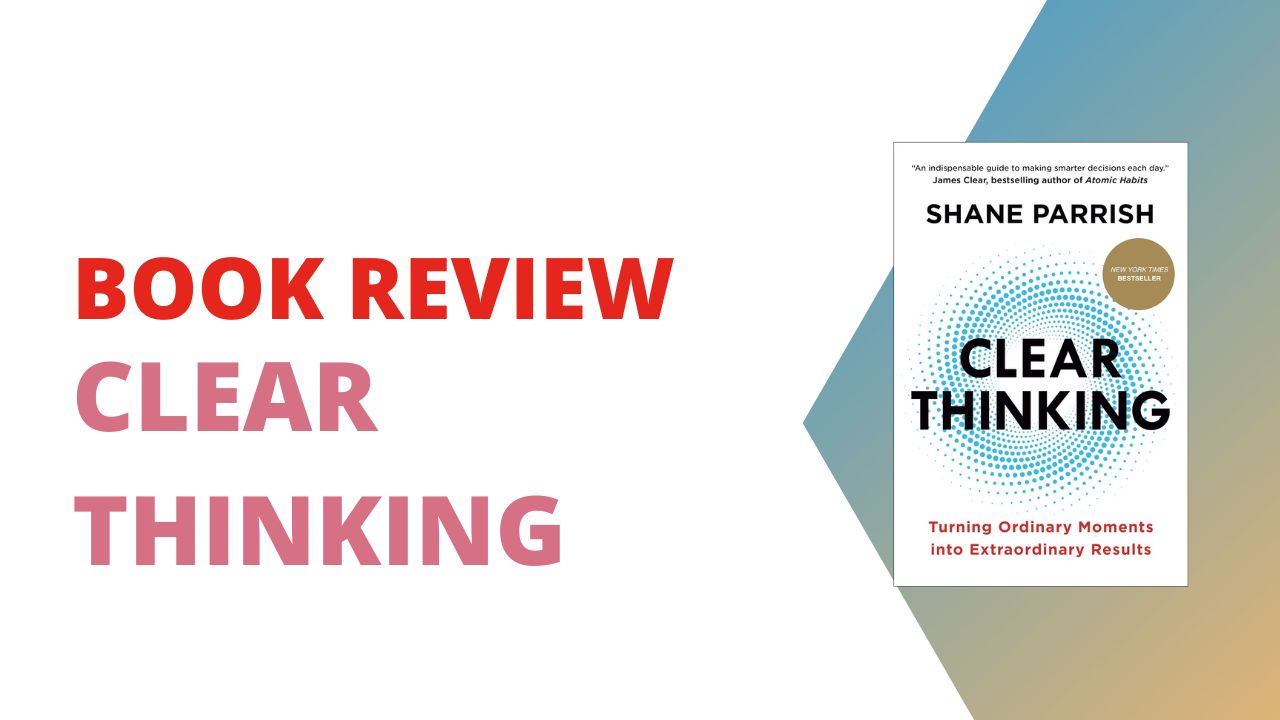I don’t remember when I first stumbled across Farnham Street but I do remember finding the content very helpful in my journey to be a life-long learner. Thus when I saw Clear Thinking by Shane Parrish I grabbed it hoping for the same feeling of great wisdom being imparted.
Parrish wrote this book to help us get the results we desire from our decisions. The first part of the book is meant to help us identify the enemies of clear thinking1. The second part is meant to show us how to put clear thinking into practice. Finally Parrish tries to help us understand when a decision was made soundly, even though the outcome may not have been what we desired at first.
What Stops Clear Thinking
In order to get the results we desire, we must do two things. We must first create the space to reason in our thoughts, feelings, and actions; and second, we must deliberately use that space to think clearly. Pg X
One of the first things that Parrish outlines is the harm that our emotions can have on clear thinking. When we respond emotionally we reduce our capacity to recognise that we’re in a situation which calls for clear thinking2 often making us respond like idiots.
A second failure point we often fall into is overconfidence, where our ego leads us to believe that we are better prepared than we really are3. Overconfidence blinds us to the risks inherent in any decision4 and makes it easy to believe the world is as we want it to be instead of the world operating on rules we don’t have direct control over.
Third, social rewards easily trick us into going along with the crowd even when we know the crowd is wrong5. This is because the rewards for fitting in with the crowd are seen long before the benefits of going against the crowd are seen. In this phase we have the detriments of standing on our own, with none of the possible future unseen benefits.
Finally, the zone of average tempts us to stay exactly where we are because things are fine6. In this zone we don’t clearly evaluate our situation because things are just good enough that we have no pain and thus feel no need to change our circumstances. Without some pain most people won’t employ clear thinking and make any changes in their life.
Take Responsibility to Learn
If you want to think clearly you must know and recognise without malice your abilities and more importantly your inabilities7. Knowing what you’re bad at is important so that you can set up your environment in such a way to help ensure that you limit your opportunity to make bad decisions because your environment doesn’t allow for them. This is like not purchasing sweets at the grocery store so you’ve made the decision once to stay away from treats instead of having to say no every time you look in the cupboard.
A second powerful part of clear thinking is to take responsibility for your actions and their consequences8. Good or bad, the consequences of your decisions will reinforce a good decision or prompt reevaluation of your decision if the outcome went poorly. It’s far easier for most people to blame others for their bad outcomes because it absolves them of any responsibility and they can keep their perfect record. This doesn’t help you make better decisions in the future though.
Making Good Decisions
The first step in making a good decision in defining the problem that needs to be solved9. That means not defaulting to the first plausible description of the problem so that you can move to the “decision” phase10, but asking yourself and your team hard questions about the true problem that needs solving. Are you only looking at the visible outcome of the problem or are you looking at the root cause that needs solving?
Once you’ve identified the problem and have some plausible solutions you need to start evaluating them. Assume that your solutions are not going to work11, what goes wrong with them? What parts of the process don’t go smoothly and need to be managed to make the solution work? What opportunities are you giving up when you choose one path over another12?
Should You Read Clear Thinking by Shane Parrish?
Clear Thinking is a decent book about how to make good decisions and comes with many tidbits that can help your thinking, but I don’t think it’s revolutionary. You’d get many of the same ideas by reading almost any book focused on Stoic Philosophy from Ryan Holiday, or better yet go back to Marcus Aurelius with Meditations.
The biggest contribution I see in Parrish’s work is the idea that if the consequences of the decision is low and it’s easy to reverse than almost any time spent gathering information is wasted time13. We easily spend lots of time gathering information about decisions that don’t matter in some vain effort to assure ourselves that we haven’t made a small error in a decision that doesn’t matter. We fear being wrong in anything so we waste time on details that don’t matter.
Purhase on Bookshop.org to support a local book shop
Purchase Clear Thinking on Amazon
